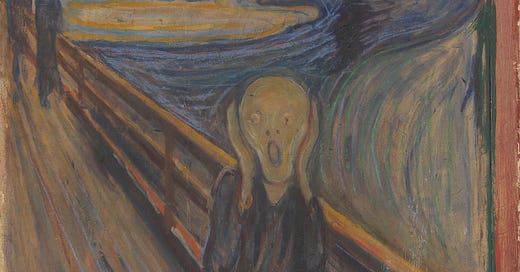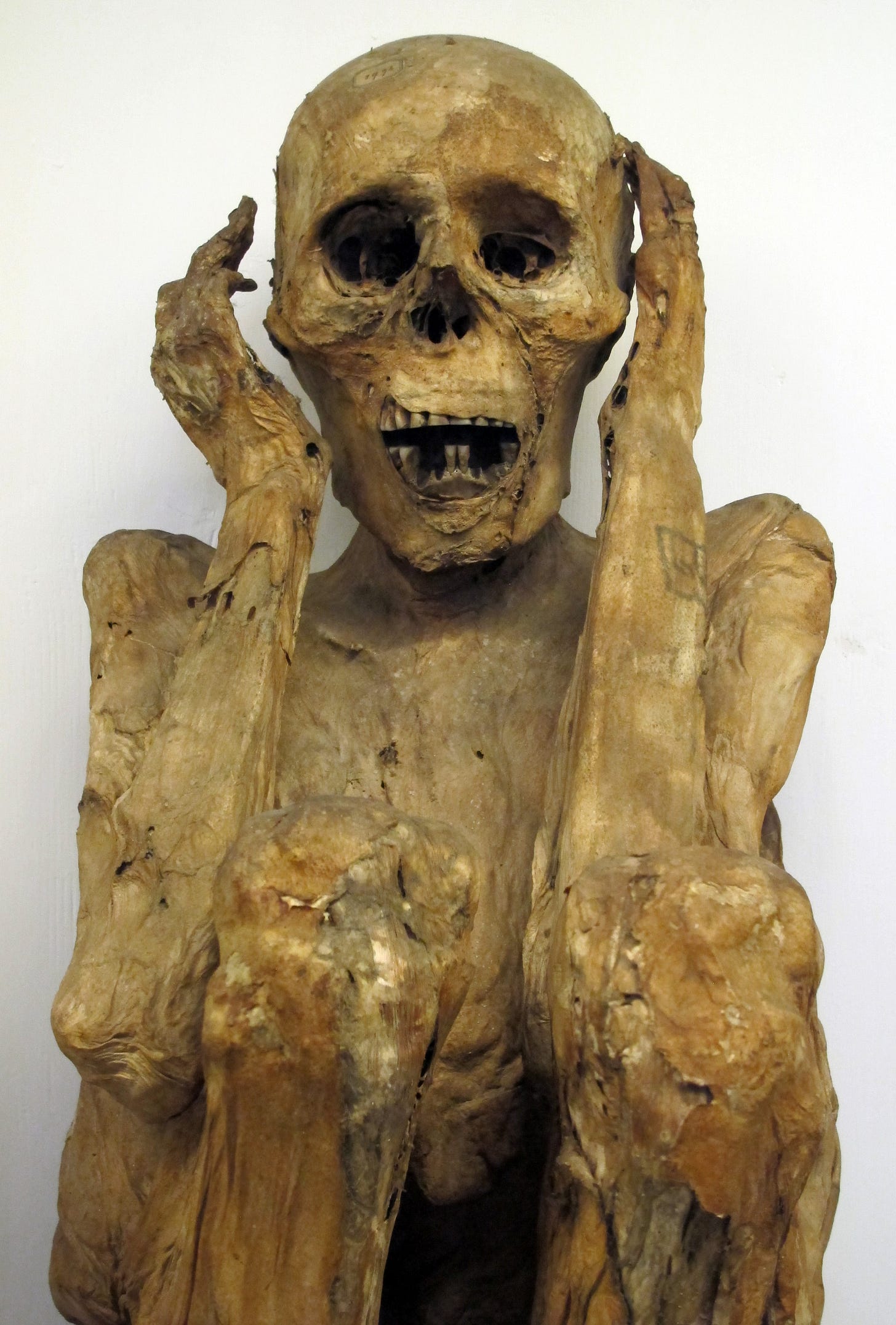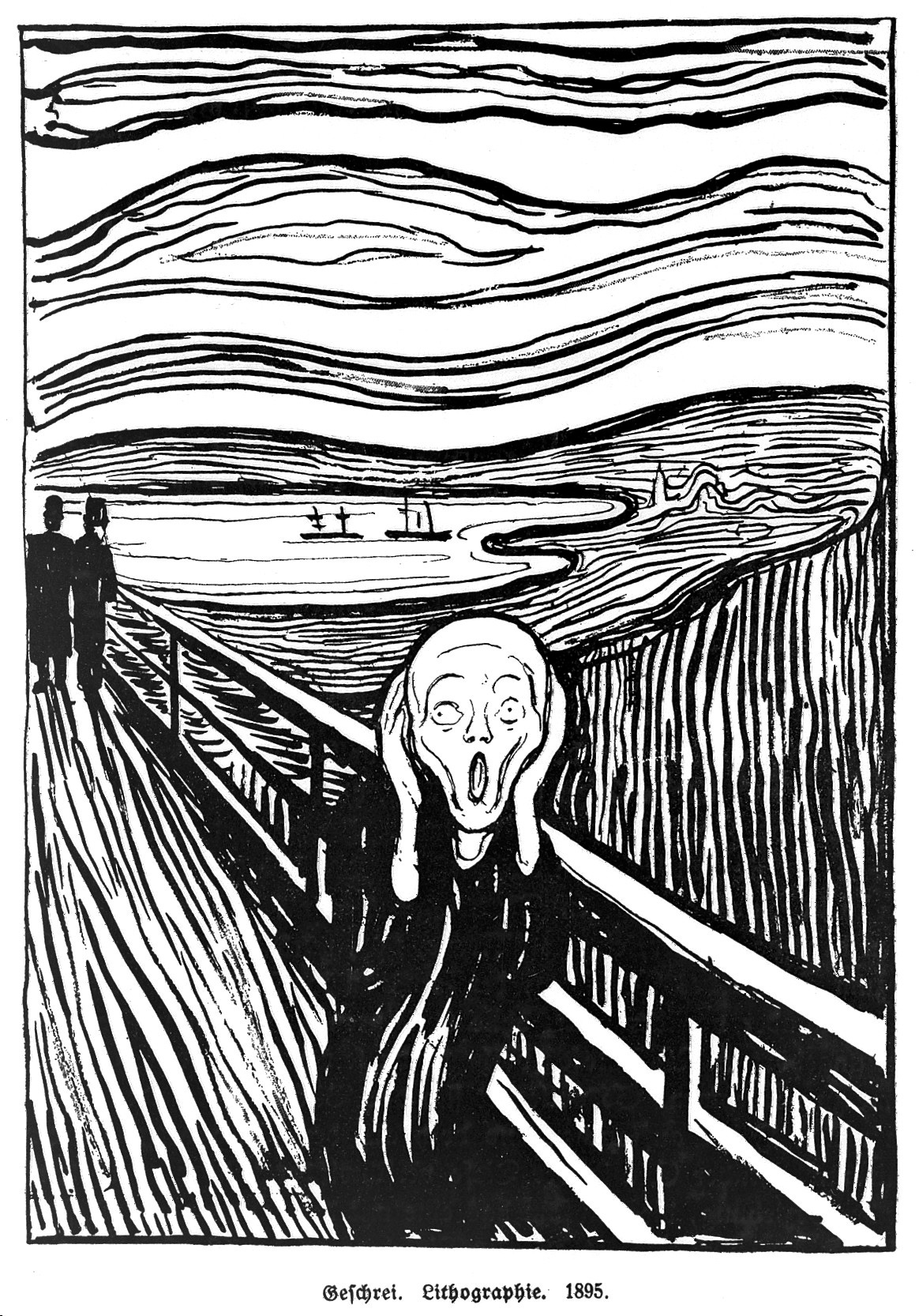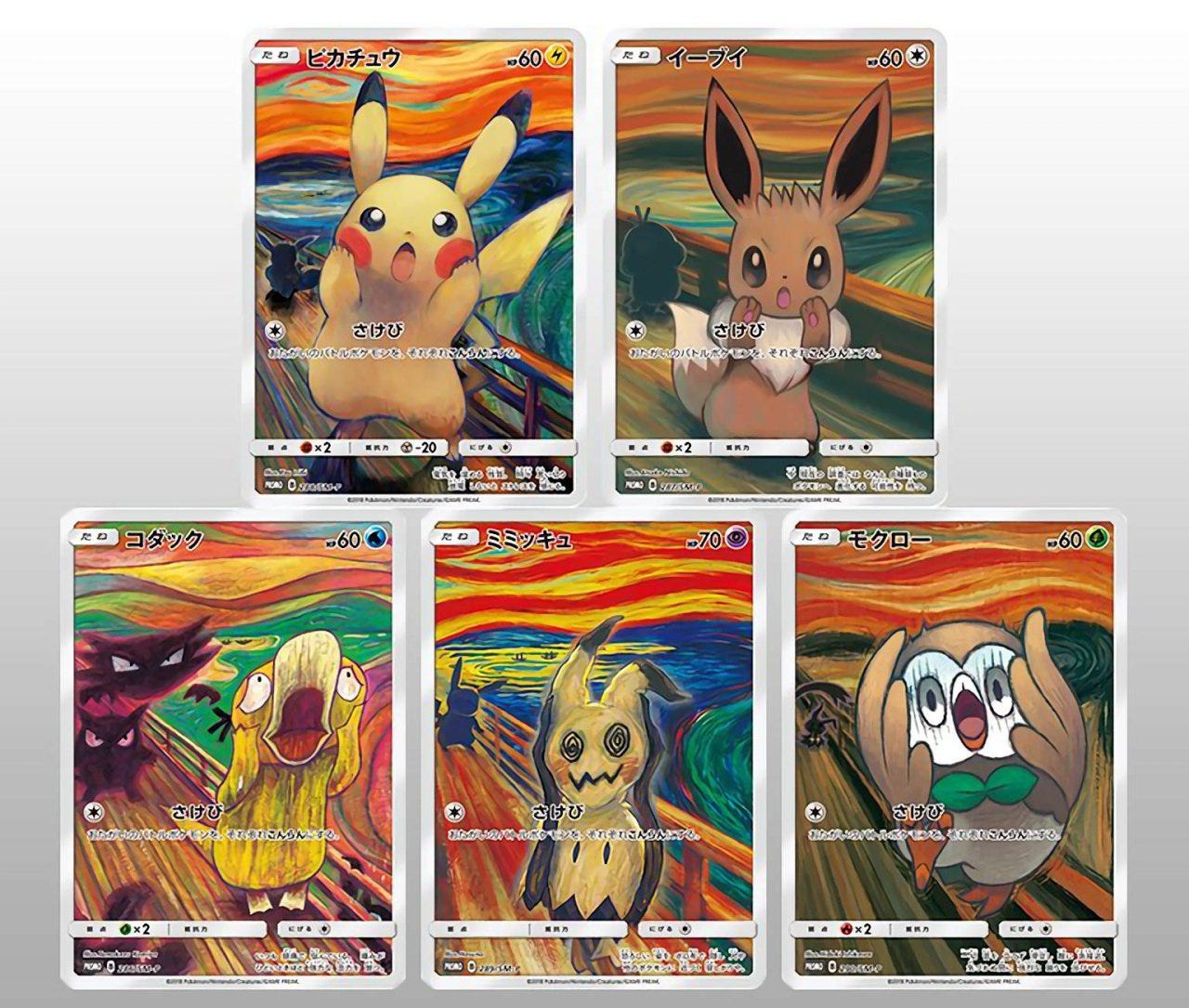How 'The Scream' (E. Munch) became pop culture's favorite painting?
About anxiety, poor critical reception and auction record.
The Scream is, without a doubt, one of the most iconic painting of the history of art. Its tumultuous journey, from a simple sensation felt by Munch (1863 - 1944) to becoming a record-breaking auction piece was made possible by its innovative display of expression.
The origin - a Distressing yet Common Sensation
Fortunately, we can trace the origin of the work thanks to the Munch’s diary, in which he wrote on January 22, 1892:
One evening I was walking along a path, the city was on one side and the fjord below. I felt tired and ill. I stopped and looked out over the fjord – the sun was setting, and the clouds turning blood red. I sensed a scream passing through nature; it seemed to me that I heard the scream. I painted this picture, painted the clouds as actual blood. The color shrieked. This became The Scream.
Contrary to popular belief, the scream is coming from nature, and not from the famous oval head. The agonizing figure is covering its ears not by surprise, but to block the infinite scream of the “blood red sky”. Munch continued in his diary:
I was walking along the road with two friends – the sun was setting – suddenly the sky turned blood red – I paused, feeling exhausted, and leaned on the fence – there was blood and tongues of fire above the blue-black fjord and the city – my friends walked on, and I stood there trembling with anxiety – and I sensed an infinite scream passing through nature.
Some believed the screaming red sky was inspired by the Krakatoa explosion, whose effects reached Norway in the 1880s. Yet, as described by Munch itself, the painting is much more the expression of anxiety rather than a terrifying meteorological phenomenon.
From his earliest childhood, Munch was confronted with the suffering associated with death and illness. He struggled with fragile health and a weak constitution, suffering from chronic bronchitis and feverish attacks as a young boy.
He was also marked by numerous family tragedies. He lost his mother when he was 5, in 1868. His older sister died from tuberculosis in 1877 in a wicker armchair that Munch would keep until his own death. A younger sister, Laura Catherine, was diagnosed as suffering from "melancholy" (now called severe depression) and was interned in an asylum in 1886. His father died in 1889, when Munch was 26.
Likely as a result, Munch returns most often to themes of illness, death and sadness, such as in the painting below, representing his older sister Johanne Sophie dying of tuberculosis:
‘The Scream’ is thought to depict a popular walking path overlooking Oslo from the hill of Ekeberg. At the time of the painting, Munch’s depressive sister Laura Catherine was interned in an asylum located at the foot of Ekeberg hill. This may have occupied some of the thoughts felt by Munch while walking around.
Munch’s inner demons seem to have been much more of a catalyst than any external sensation he may have experienced on the Ekeberg road. Death, illness, depression, anxiety are recurring themes in Munch's works. Art was cathartic for him: his emotions are first expressed on the canvas.
The Central Figure
The first question that comes to mind when looking at ‘The Scream’ is: who - or what - is represented as the central figure?
Munch explained in his diary that he himself felt the sensation depicted. Yet the central figure, holding its head in its hands with its mouth wide open, almost does not look human. Its appearance - despite the context suggesting it represents the painter himself - makes the figure universal, as a sheer incarnation of an emotion onto which everyone can project themselves.
This shift, from a personal representation to an universal sensation, is a hypothesis suggested by the artist's first sketches on the subject, where we see an elegantly dressed man leaning on the railing, before this figure lost its gender and even its human figure in favor of a universal silhouette.
Historians have also suggested that the mysterious face was probably inspired by a Peruvian mummy that Munch discovered during the Universal Exhibition in Paris in 1889.
Critical reception
‘The Scream’ is now highly recognized for its depiction of pain and anxiety - arguably one of the greatest evils of the 21th century - as its expression speaks universally to viewers.
The vivid sense of fear - whether due to an upcoming event, the unknown future, or the uncontrollable aspects of life - is something we have all experienced. Suddenly, we feel completely empty and overwhelmed by our own thoughts, lost in a collapsing world and abandoned by everyone, as people refuse to see anxiety in the same way we avoid expressing it.
Like the two indifferent friends who appear in the background (described by Munch as such in his diary), the painting manifests anxiety both as a crisis and as a deeply personal feeling that we are reluctant to share.
This is why we love ‘The Scream’ - no other artwork has so perfectly captured this feeling. Yet, in the late 19th century, anxiety and self-expression were not as publicly acknowledged or understood as they are today. The initial critical reception of the painting was harsh, but this also demonstrated how groundbreaking it was.
First shown to the public in Oslo in 1895, the painting raised much criticism and many questions.
Its unconventional style, which prefigured Expressionism, shocked viewers with its vivid colors and distorted forms. It was a radical departure from the prevailing, yet evolving, artistic norms of the time, especially because of its emotional intensity.
Its portrayal of psychological anguish was considered too disturbing by some critics, and the theme—like many of Munch’s other subjects concerning suffering and death—was deemed inappropriate for public display.
About the painting, the Norwegian museum director Henrik Grosch even wrote in the early 20th century that Munch “could no longer be considered a serious man with a normal brain.”
Recent infrared analyses revealed that Munch himself wrote the following words in pencil on the red sky:
“Kan kun være malet af en gal Mand !” (Can only have been painted by a madman!)
It is believed that Munch added these words after the first public display, affected by the criticism, as he was sensitive to the subject of mental health due to his family experience.
Munch himself, though subject to anxiety and other psychological problems, was not insane. Critics were more likely shocked by the intensity of expression that formed the basis of this new art movement. The image of this suffering figure is undoubtedly shocking, but this is what made it so powerful.
The Proof of Success: Thieves and Rich Buyers
A good measure of a painting's popularity is, unfortunately, the number of times it has been stolen - incidents that often enhance the painting's aura. In the case of ‘The Scream’, it has been stolen twice.
There are a total of five works in the series: the 1893 painted version, which we have discussed, and four others: another painting from 1910, two pastels on cardboard (one from 1893 and one from 1895), and the lithograph prints.
In 1994, the 1893 painted version was stolen from the National Gallery in Oslo, the day of the opening day of the Winter Olympics in Norway! The thieves left a note after their brief visit: “Thanks for the poor security”. The painting was recovered undamaged three months later.
In 2010, masked gunmen entered the Munch Museum in Oslo in broad daylight and stole the 1910 pastel version of ‘The Scream’, along with Munch’s ‘Madonna’. Both were recovered two years later with slight damage.
These spectacular thefts, as well as their media coverage, increased public interest in ‘The Scream’ and likely helped setting another record in 2012: the sale price of $119.9 million for the 1895 pastel version of the subject.
Pop Culture Revival
It is impossible to list all the references made to Munch’s masterpiece in the last forty years. I will highlight some of the most obvious ones and conclude with a personal favorite - but you may have many others in mind!
The painting, 130 years after its creation, has evolved from an Expressionist masterpiece to a pop culture icon. Its truthful representation of a universal sensation, combined with the personal history of the painter and his painting, has elevated it to this status.
Andy Warhol did his own version in 1984. In 1990, the poster of the blockbuster ‘Home Alone’ clearly referenced the painting, as did Ghostface’s mask in the first ‘Scream’ movie, six years later.
And what about the "fear" emoji, which many of us may have used even today? 😱
In 2018, the most profitable franchise in history, Pokemon, even released a series of five Pokemon cards referencing the painting. This was initially done to celebrate the first exhibition of ‘The Scream’ in Japan. Needless to say that these cards are highly sought after today…











Thanks for such a detailed analysis. What I find so interesting about the initial sketch is that the red sky seems to be the initiator of the scream, but no one would understand it that way, because no one is reacting. He had to show someone reacting in order to make it real--not himself, but an androgenous figure who would render the scream universal. (Seen with today's eyes, I wonder if he was having a panic attack.)